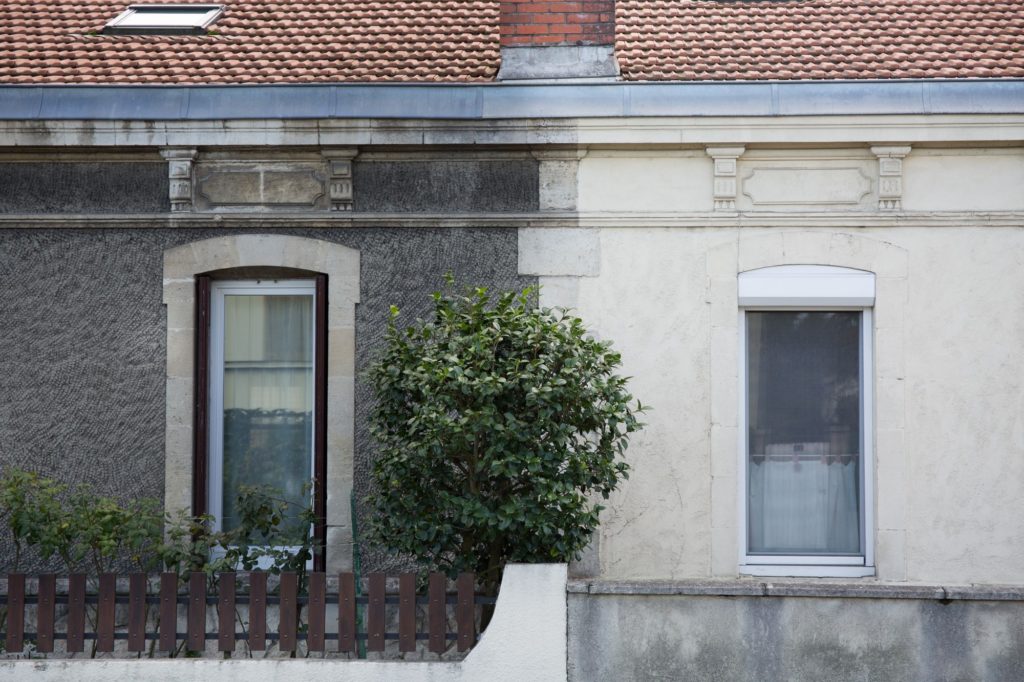A clean and beautiful facade: how to quickly clean the walls and glass of houses. Pro Tips.
Each owner of a private house, summer house, and cottage strives to keep his home clean. But for this, it is necessary not only to do regular cleaning inside the building but also to periodically clean its walls and windows outside. It’s good when you can use the services of professional cleaners. If there is no time or opportunity to hire specialists, then you can independently carry out express cleaning of the facade of the building. To do this, you can use the advice of professionals, which will be given in this article.
Read also:
Preparatory stage before express cleaning of the facade
Under the influence of atmospheric factors and other environmental influences (exhaust gases, the soot of industrial enterprises, etc.), the exterior decoration of buildings begins to gradually deteriorate. To prevent destructive effects and make buildings attractive, it is recommended to regularly do express cleaning of facades. With the necessary supplies and tools, property owners will be able to quickly and easily refresh the finish and give a well-groomed appearance to their home.
Before starting the procedure for cleaning the exterior cladding of the house, you need to choose detergents and tools that match the type of finishing material. Most commonly, facades are made of wood, brickwork, concrete mortar, polymer construction materials, plastered compounds, outdoor tiles. But there are also buildings with facades made of metal, sandstone or limestone, natural materials (granite or marble), modern glass coverings, etc.
In addition, it is worth considering the type and complexity of the pollution. They can be:
- organic nature (fungal spores, mold, mosses, various microorganisms;
- mineral origin (plaque and stains that form as a result of the accumulation of elements from the surrounding air).
As far as the right equipment is concerned, a telescopic mop, a carbon rod, or a pressure washer will suffice. Water must be supplied under pressure so that accumulated deposits and other contaminants can be effectively and effortlessly removed from surfaces. You may also need a stepladder or a higher staircase if you have to perform cleaning of a multi-story building. Although, it is better and safer for the owners of such houses to order professional cleaning of facades.
STEP-BY-STEP ACTION PLAN
After the nature of the contamination and the type of facing materials have been established, as well as the appropriate detergents have been selected, you need to think over a step-by-step action plan. Facade cleaning process:
- assessment of the condition of surfaces and determination of the most difficult contamination;
- preliminary soaking of areas with particularly difficult pollution;
- taking the necessary measures to protect window panes and frames, balcony doors, and other places that may suffer from water pressure;
- selection of up-to-date sink attachments or booms;
- supply of a stream of water for cleaning walls from top to bottom with a periodic return to pre-soaked areas with a large area of contamination;
- rinsing surfaces with clean water to remove residues of dirt and chemical elements after using detergents.
Checklists for self-express cleaning of facades made of different materials
The procedure for cleaning house facades may vary. The principle of operation is based on the type of finishing material.
BRICK WALLS
Walls with brickwork can be quickly cleaned of accumulated dust and dirt using a mini-sink and special attachments. First, you need to close the windows and doorways, as well as electrical panels and openings to other communications, so that water supplied from the pressure sink does not leak into the cracks and seams.
Then you can inspect all surfaces and outline the locations with the greatest degree of contamination, which it is advisable to soak with detergents in advance. By connecting an automatic sink or using a hose, you need to direct the jet to the upper point of the wall and gradually wash off the layer of dust, moving along the entire area of the facade. In the end, it is worth finally rinsing the surfaces from the residues of chemicals.
HOUSE WITH A FACADE OF CLINKER TILES
Clinker facade cleaning begins with cleaning the surrounding area and preparing the stairs. The tiles are cleaned by hand and therefore hard brushes and mops with telescopic handles are required for the procedures. Having marked the wall into squares in advance, you need to move from the top to the bottom.
Clinker tiles for facades are cleaned with special detergents. But in the case of heavy pollution, stains are removed locally with hydrochloric acid. For safety reasons, it is best to wear a respirator and gloves when handling the chemical. Once all areas have been treated with hydrochloric acid, you can connect a sink or supply water under pressure through a hose to flush all the chemical components from the facade. In conclusion, it is worth treating the walls of the building with soapy water, and then thoroughly rinse everything off with clean water.
FACADE MADE OF MODERN PLASTIC MATERIALS
Homes outside with plastic finishes can be tidied up quickly in a few steps:
- selection of detergents with compositions that will not harm the cladding and fittings;
- taking measures to protect areas with defects (cracks, mechanical damage) – water supplied under pressure can aggravate the situation;
- preparation of hoses and ladders to clean surfaces from top to bottom and avoid streaks;
- cleaning of walls with plastic panels with a medium pressure jet.
WOODEN HOUSES
It is better to clean the facades made of natural wood regularly from dust and accumulation of fragments of the outdoor environment, since over time, the process of decay of wood may begin in these areas. Also, mosses can form on wooden surfaces, which spoil the overall picture.
For express cleaning of a facade made of natural wood, you can use the same pressure washer. With it, you can quickly remove all accumulations from the outer walls of the house and refresh them. In more difficult situations, it will take more time to remove moss and rot, as well as hard brushes or special equipment (sander).
PLINTH MADE OF STONE
Street dust, dirt, and other fragments of the external environment are most intensively absorbed into natural stone, with the help of which the basement of buildings is most often formed. To quickly and efficiently clean it, you need to prepare acid solutions and brushes for manual removal of dirt.
To remove organic compounds from stone surfaces and seams, alkali solutions or solvents, as well as pastes that corrode dirt, are suitable. Areas with more complex contamination are best handled mechanically. For this, grinders are suitable, the operation of which requires special skills and vigilance.
WINDOWS WASHING
After the cleaning of the facade walls is completed, you can start washing the windows. And washing them inside the house is not as difficult as outside. Dusty surfaces with spots, streaks and adhered fragments of the external environment require a special approach. But, when time is running out, you can use the advice of professionals for effective express window cleaning.
To begin with, it is important to prepare a stepladder, telescopic wiper, and special glass detergents. Considering that from the street side there can be a lot of dried grains of sand that can scratch the glass, it is important to pre-moisten the window with water.
Then you want to spray on the detergent. After a few minutes, you need to remove the solution together with dirt with a sponge or glass cleaner, moving from top to bottom and wiping off the rubber pad after each pass. If you use the tool correctly and guide it strictly horizontally, then there will be no streaks on the surface. This will save time for express cleaning and eliminate the need to rub the window glass from the street with paper towels.
It is recommended to clean the facades of houses and wash the windows from the outside twice a year – after the end of summer and with the arrival of spring. But express cleaning of the facing side can be performed more often in order to prevent the appearance of multi-layer old dirt and save your resources.



